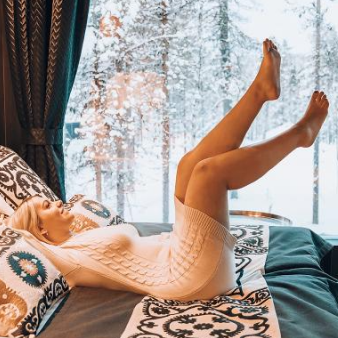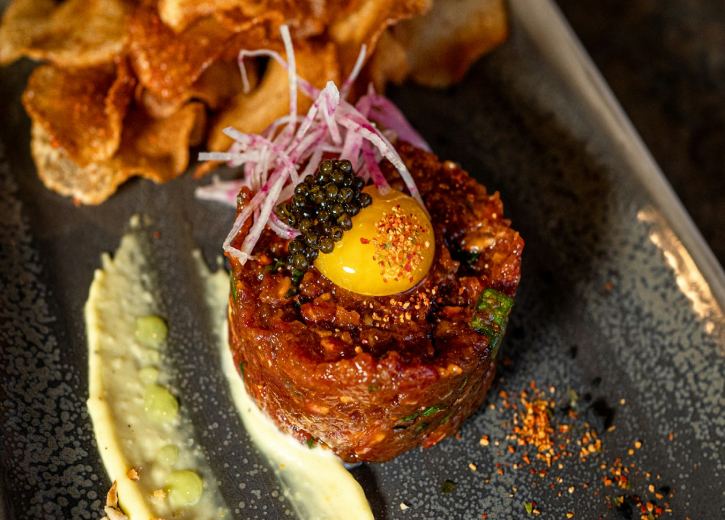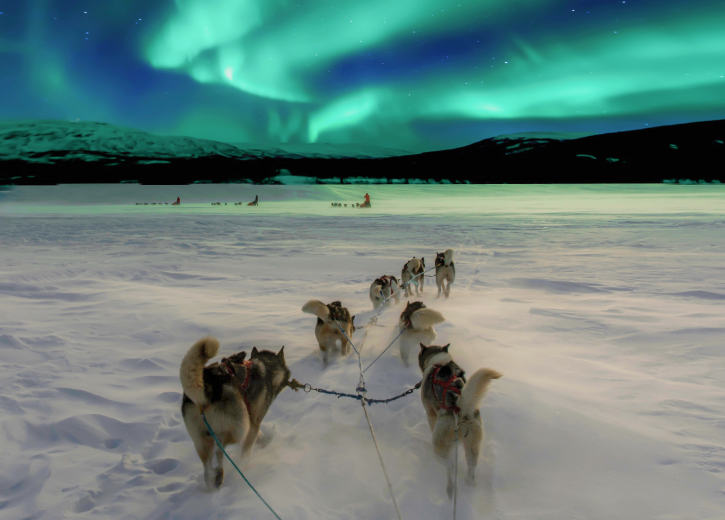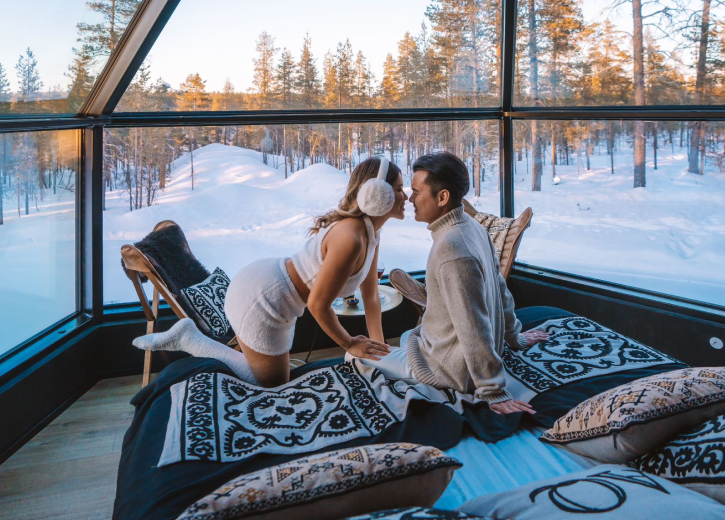The best time to visit Lapland for snow activities is from mid-December to early April, with January to March offering the most reliable snow conditions. February and March provide an ideal balance of increasing daylight hours and excellent snow quality, making them perfect for winter adventures. December offers magical Christmas ambience but with minimal daylight, while April brings longer days but potentially deteriorating snow conditions. Your ideal timing depends on which specific Lapland snow activities you prioritise and whether seeing the Northern Lights is essential to your Finnish Lapland experience.
Understanding Lapland’s winter season for snow enthusiasts
Lapland’s winter season transforms northern Finland into a snow-covered wonderland that beckons adventure seekers from around the world. The winter season typically extends from late November to mid-April, though the quality and depth of snow varies significantly throughout this period. What makes Lapland special for winter enthusiasts is the combination of pristine powder snow, vast unspoiled wilderness, and the unique Arctic environment that supports activities impossible elsewhere.
Timing matters tremendously when planning snow activities in Lapland. Early winter offers the magical Christmas atmosphere with fresh snowfall, while mid-winter provides the deepest snow coverage ideal for snowmobiling and cross-country skiing. Late winter brings longer daylight hours perfect for extended outdoor adventures while still maintaining excellent snow conditions. At Aurora Queen Resort, we’ve observed how the changing character of Lapland’s winter affects our guests’ experiences throughout the season.
The peaceful surroundings of northern Finland create the perfect backdrop for various snow activities, from gentle snowshoe hiking through powder-laden forests to exhilarating husky safaris across frozen landscapes. Each period of winter offers a different experience, with its own unique charm and advantages for snow enthusiasts.
What months offer the best snow conditions in Lapland?
January through March offers the most reliable and optimal snow conditions in Lapland, with snow depths typically reaching 60-80 cm in most areas. This mid-winter period ensures dependable conditions for all Lapland snow activities, from snowmobiling to husky sledding. The snow quality during these months is typically dry and powdery due to the consistently cold temperatures, which generally range from -10°C to -20°C.
December marks the beginning of proper winter in Lapland, though snow coverage can be less predictable. By mid-December, most areas have accumulated sufficient snow for winter activities, but depths are generally less than in the peak winter months. The Christmas season brings a magical atmosphere despite the still-accumulating snowpack.
February stands out as particularly excellent, combining reliable deep snow with slightly milder temperatures than January, typically ranging from -5°C to -15°C. This creates ideal conditions for activities like snowshoeing through our backyard terrain or embarking on snowmobile safaris through surrounding forests.
March maintains excellent snow conditions while offering noticeably warmer temperatures, often between -5°C and +5°C during daytime. The snow base remains solid, though it may become more compact and slightly wetter during sunny days. This month provides perhaps the most comfortable conditions for enjoying outdoor winter activities in Finnish Lapland.
Early April can still offer good snow for activities, though conditions become increasingly unpredictable as spring advances. While the snow base usually remains adequate for most activities, the quality changes to heavier, wetter snow, particularly during warm daytime periods.
How does daylight affect your snow activities in Lapland?
Daylight hours dramatically impact your Lapland winter experience, with December and January experiencing the polar night phenomenon (kaamos), when the sun doesn’t rise above the horizon. During this period, you’ll have approximately 2-4 hours of twilight or “blue light” daily, creating a mystical atmosphere but limiting daylight snow activities to a short window between 10:00 and 14:00.
This limited daylight doesn’t mean activities cease – it simply transforms them. Evening snowmobile safaris and reindeer sleigh rides take on a magical quality under starlit skies, and the darkness provides excellent opportunities for Northern Lights viewing directly from our glass-ceiling aurora view igloos.
By February, daylight conditions improve significantly, with roughly 6-8 hours of proper daylight. This expanded window allows for more extensive daytime adventures while still providing dark evening skies for aurora hunting. Our guests particularly appreciate this balance for activities like longer snowmobile expeditions that benefit from better visibility.
March brings a dramatic shift with approximately 10-12 hours of daylight, allowing for full days of snow activities under bright skies. The late afternoon transitions to dusk create spectacular lighting conditions for photography enthusiasts capturing Lapland’s winter beauty. This month offers the most versatile conditions, with sufficient darkness for evening Northern Lights adventures while maximizing daytime activities.
By April, daylight extends to nearly 14-16 hours, with the midnight sun approaching. While this provides almost unlimited time for daytime activities, it significantly reduces opportunities for Northern Lights viewing as the skies remain too bright during most nighttime hours.
Which winter month is best for seeing the Northern Lights while enjoying snow activities?
February and March provide the optimal balance between aurora viewing opportunities and favorable snow conditions in Lapland. These months combine dark night skies, improving weather stability, and excellent snow coverage, creating ideal circumstances for combining Northern Lights viewing with daytime snow adventures. The statistical peak for aurora activity occurs around the spring equinox in March, contributing to these months’ popularity for Lapland winter holidays.
December and January offer the darkest skies, providing more hours for potential aurora viewing. However, these months often experience more cloud cover and snowfall, which can obstruct views of the Northern Lights. When clear nights do occur during this period, the complete darkness creates dramatic backdrops for the dancing lights, especially when viewed from our glass-ceiling igloos.
Weather patterns significantly impact aurora visibility, with February typically experiencing more stable weather than the early winter months. By March, clear skies become more frequent, though increasing daylight means aurora viewing starts later in the evening, typically after 9 pm.
For the best experience, we recommend planning a Lapland travel itinerary that includes both daytime snow activities and evening aurora hunting. Many of our guests enjoy activities like snowshoeing or husky safaris during the day, followed by evenings watching for the Northern Lights from the comfort of their panorama suite or on a guided Northern Lights adventure.
Key takeaways for planning your Lapland snow adventure
The ideal timing for your Lapland winter adventure depends entirely on your priorities. For optimal snow conditions, January through March offers the most reliable deep snow coverage for activities like snowmobiling, husky sledding, and snowshoeing. February and March provide the best overall balance of good snow, increasing daylight, and excellent Northern Lights viewing potential.
For those primarily focused on aurora viewing while still enjoying snow activities, late February to early March offers the statistical sweet spot – combining dark skies, improving weather stability, and peak aurora season. December provides a magical Christmas atmosphere with fresh snow but minimal daylight, while April offers abundant sunshine but diminishing snow quality and fewer Northern Lights opportunities.
When booking your stay at Aurora Queen Resort, consider planning a 4-7 night visit to maximize your chances of experiencing optimal conditions for both daytime activities and Northern Lights viewing. Our glass-ceiling aurora view igloos provide the perfect accommodation for aurora hunters who still want to enjoy the winter comforts.
Preparation is essential regardless of when you visit. Pack appropriate layered clothing even when visiting in March, as temperatures can still drop significantly at night. For December or January visits, prepare for the limited daylight by scheduling activities efficiently and embracing the unique blue twilight and dark sky experiences that only the depth of Lapland’s winter can provide.
Remember that each period of Lapland’s winter offers its own unique magic – from December’s Christmas wonderland to March’s perfect balance of snow and light. The peaceful environment of northern Finland creates unforgettable experiences throughout the winter season, with foxes and other wildlife often visible against the snowy landscape surrounding our family-owned resort.



